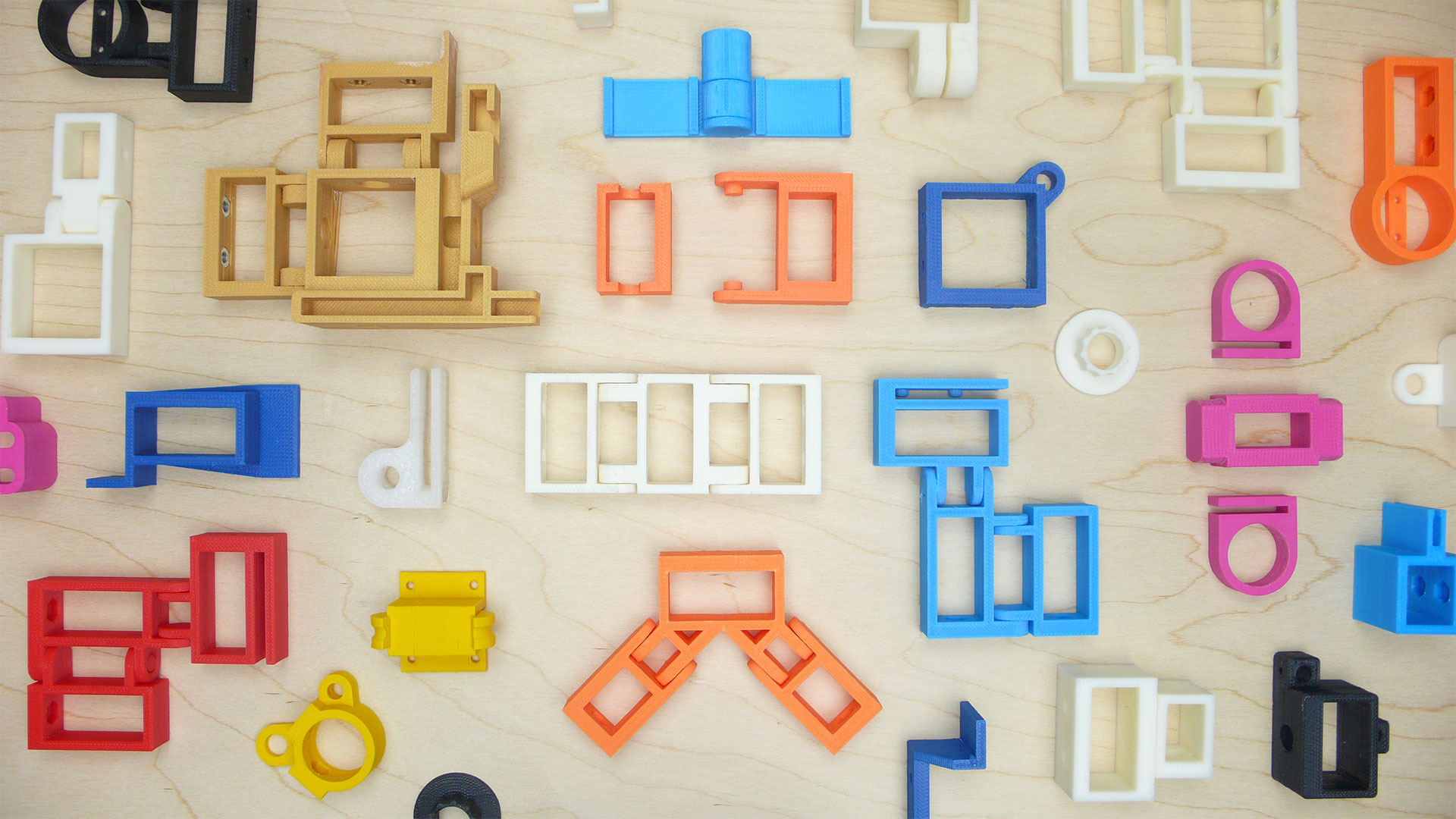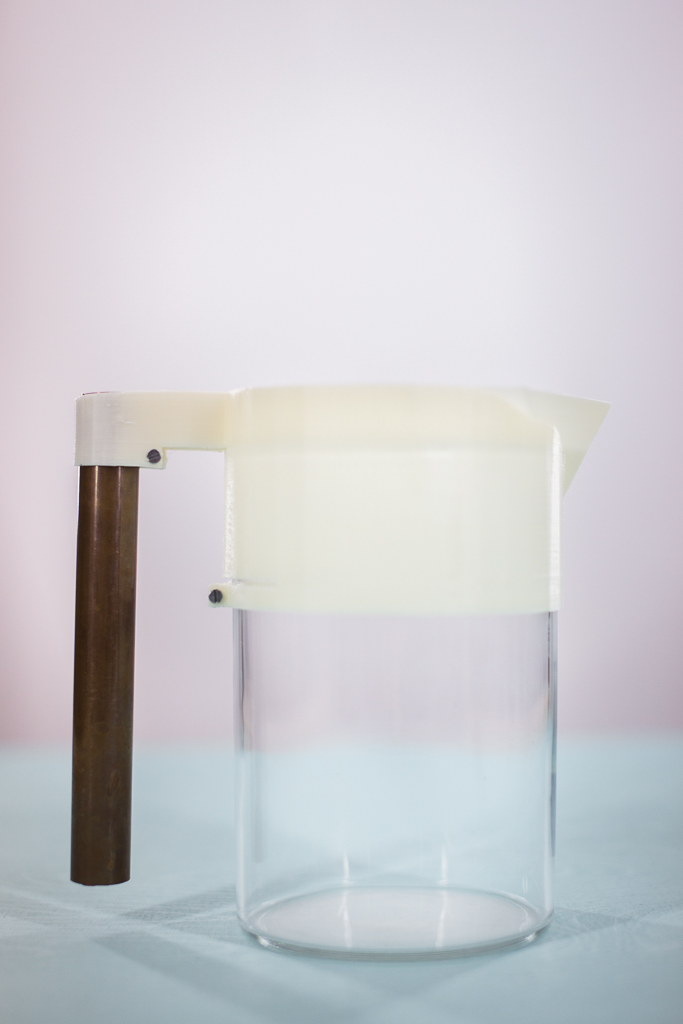
Parametric standardization
Parametric Standardization is a bundling of outcomes based on research in the field of making 3D printing applicable in the current day and age. Research was done in theoretical and aesthetic direction. Outcomes were two series of furniture, based on 3D printed connectors used in combination with rough material. During the Dutch Design Week 2014 we presented our first currated exposition Keyshapes featuring designs by Unfold, Jesse Howard and PennyWebb.
Parametric Standardization revolves around shape and size independent design, which leads to location and material independent design. One can imagine printing connectors that fit standard metric material in Europe, where connectors in the USA should fit imperial measurements. A parametric standardized design would fit both, depending the selected input.
“Parametric Standardization
revolves around shape
and size independent design.”
Aspects such as design based on database connection and user influenced, had their outcome in a proof of concept software application. The theory is that databases, used by companies for keeping track of materials they are selling and buying, are used as input for parametric standardized designs. This gives users influence in the final aesthetic and pricing of an object, dependent on what is available in hooked up databases.
This leads to a rough image of how an economy would work where objects would be virtual and created adhoc, dependent on available local material.

Standardization
Industrialization lead to the mass production of all the products that surround us, but before it was possible to build such a broad range of products, their components needed to be standardized. One of the first examples was used by the Colt manufacturing company just before the American civil war, where parts for rifles were no longer custom made, but mass produced in such a way that parts of one gun could be used in another. This way of thinking led to the different sizes of bolts and nuts that you can find in your local hardware store. But it also led to the different sizes in batteries, antenna’s in mobile devices and even offset between pins in microchips.
Parametric Standardization
We decided to use a lamp designed by Kueng – Caputo and make the lamp DDIY (doable do it yourself) with printed connection parts for the mainly wooden lamp. This lamp is in essence a repeat of the Colt rifle, but instead of standardizing the components for products we are making parts that can adapt to standardized objects. We call this principle Parametric Standardization. The world is filled with parameters, circles with diameters, rectangles with lengths and widths, objects with weights and corners with angles. By extracting these parameters and creating standardized designs around them, the need to either understand a program or the technique behind them is no longer necessary. Everybody can measure and modify the product design when the model for printing is generated.
In principle the parts of the lamp were designed to be fully parametric with a simple tightening mechanism composed of a bolt and nut that tightens the printed part around the wood. When setting up the parts, it turned out that the idea of making the lamp fully parametric was too complicated. Per lamp it required measurments of 16 different locations in both x and y direction, and the print had to fit almost perfectly to make the tightening mechanism work.
When rethinking the design we discovered that the parameter of influence should not be a true local size, but instead should be the wood’s standardized size. So instead of using the micrometer to measure all locations, we chose 22 cm x 48 cm (the standard size of one piece of wood in the Netherlands) and gave this a 1 mm margin of error. The design was altered in such a way that the parts could be fixated by pressing bolts into the wood. And they were no longer attached to each other by bolts, but were made to snap-fit.
Object database
As said at the start of this piece, objects are not only physically around us, but most of them are already virtually stored in databases. Taking the lamp again as an example, the electric cord, the fitting and the bulb are all bought from an online shop and the wood is bought at a local hardware store or DIY store that has an online store as well. In these online environments, it’s easy to retrieve the parametric values needed to print the parts and, as a bonus, it gives us the pricing of the objects.
Because the product designs are completely virtual, you could imagine this concept being hooked into databases all over the world. Where this product would be in mm in Europe, American databases would use inches instead. Pine or fir is the most commonly used wood in the Netherlands, but in eastern Asia they might have completely different standards of wood such as bamboo and teak. The same works for electronics, plumbing, nuts and bolts. And because the concept is still fully parametric, a lamp that is originally 2 meters tall could be made in any wished size just by scaling the length of the wooden parts.
As the McKinsey report says, 3D printing is a disruptive technology. We truly start to believe this. By using parametric design as we propose here, virtual concepts can be realized by combining local 3D printers (hubs), local hardware and DIY stores and local electronics stores. This will potentially result in lower prices, a lower carbon footprint and a strong local economy but still will deliver high quality designs that can be made to fit personal wishes and preferences.
